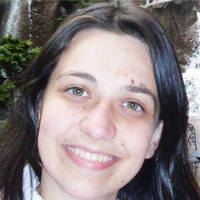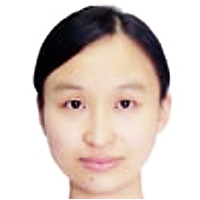Clinical relevance linked to echocardiography diagnosis in Bland, White and Garland syndrome
Published on: 6th March, 2020
OCLC Number/Unique Identifier: 8560715071
Introduction: Bland, White and Garland syndrome is a coronary anomaly with high mortality without treatment. Its clinical presentation is varied which makes epidemiological documentation difficult. Echocardiography is a useful non-invasive tool for diagnosis.
Objective: To determine the echocardiographic variables that lead to the diagnosis of Bland, White and Garland syndrome and their clinical relevance.
Material: Observational, prospective and cross-sectional study in 31 patients of the “William Soler” Pediatric Cardiocenter, from 2005 to 2018. To check the association of echocardiographic variables with the diagnosis of Bland, White and Garland syndrome, an effectiveness study was carried out that included the analysis of the incidence of echocardiographic variables that lead to the diagnosis of this entity. The clinical relevance was estimated according to the minimum importance limit. The statistical validation of the research results adopted a significance level of less than 5% (p < 0.05).
Results: The variables that facilitate the echocardiographic diagnosis of Bland, White and Garland syndrome were the echocardiographic visualization of the anomalous connection and the reversed flow in the anomalous left coronary artery. These echocardiographic measures have clinical relevance according to the quantification of risk estimators (incidence) the echocardiographic visualization of the anomalous connection, RR 39.00 and the reversed flow in the anomalous coronary artery, RR 26.31. LIM´s calculation value amounted to 6.31 and coincided with the risk estimators (incidence).
Conclusion: The echocardiographic visualization of the anomalous origin of the left coronary artery from the pulmonary arterial trunk and the detection of the local intracoronary reversed flow instituted as factors to be considered for the effective diagnosis of the disease. The documentation of the diagnostic aspects of the syndrome through echocardiography contains high statistical value and clinical relevance.
Diabetes and chronic kidney disease: a rare cause for a very common association
Published on: 20th November, 2019
OCLC Number/Unique Identifier: 8404983788
The authors present the case of a 45-year-old female patient with diabetes and chronic kidney disease (CKD). She had unsatisfactory glycemic control, and showed some intellectual limitations. Her urine exam was unremarkable, and her renal ultrasound revealed single right kidney with aspects suggesting ureteropelvic junction syndrome. Her mother had also suffered from diabetes and CKD G5D presenting in the sixth to seventh decade.
An hereditary cause for CKD was considered, which led the authors to investigate an autosomal dominant cause for CKD with a tubulointerstitial phenotype, taking into account the personal and family history for diabetes and also the renal imaging; a large deletion in the HNF-1β gene was identified through Multiplex Ligand Probe Assay (MLPA) analysis, explaining the phenotype.
Genetic causes of CKD should be considered in the presence of positive family history for CKD, and the coexistence of diabetes with bland urine sediment should raise the possibility of a syndromic cause of the phenotype, namely involving HNF-1β gene mutations or deletions.
Usefulness of foot-to-foot bioimpedance analysis for assessing volume status in chronic hemodialysis patients at the Aristide Le Dantec University Hospital (Senegal)
Published on: 20th July, 2021
OCLC Number/Unique Identifier: 9198815507
Introduction: Determination of dry weight is one of the daily goals to achieve in hemodialysis. The aim of this study was to validate the use of bioelectrical impedance analysis (BIA) in estimation of dry weight in a population of Senegalese chronic hemodialysis patients.
Patients and methods: A 9-week cross-sectional study was carried out at the hemodialysis unit of Aristide Le Dantec University Hospital. Adult patients with no previous hospital history were included. The total body water (TBW) was measured with a single frequency bioelectric impedance foot-to-foot analyzer, before and after six successive hemodialysis sessions. These results were compared with those from clinical measurements with the Watson equation using a Student’s t-test and Bland-Altman analysis.
Results: 264 measurements were made in 22 patients (46.6 years, 54.5% men, 92.3 months on dialysis, 62.7 kg mean dry weight). A significant reduction in weight (ΔWeight = 2.0 ± 1.1 kg; p < 0.0001) and in TBW measured by the BIA (ΔTBWBIA = 3.3 ± 1.0 liters; p < 0.0001)) or calculated by Watson’s equation (ΔTBWWatson = 0.5 ± 0.2 liter; p = 0.0001) was observed. There was a strong linear correlation and agreement between the 2 TBW measurements in pre-dialysis. In post-dialysis the concordance diagram indicated a bias = –2.2 and wide agreement limits.
Conclusion: The BIA allows reproducible and reliable measurements and a fair estimate of the TBW in pre-dialysis.
Forecasting Soil Moisture in Caragana Shrubland Using Wavelet Analysis and NARX Neural Network
Published on: 7th October, 2024
It is important for sustainable use of soil water resource and high-quality development to forecast the soil moisture in forestland of water-limited regions. There are some soil water models. However, there is not the best model to forecast the change of soil moisture in the caragana shrubland. In this paper, the plant water relationship has been investigated at the same time for a long term in the caragana shrubland of semiarid region of the Loess Plateau of China. The data of soil moisture was divided and then NARX neural network was used to build model I and model II. For model I, low frequency component was the input variable, and for model II, low frequency component and high frequency component were predicted. The results showed the average relative error for model I is 3.5% and for model II is 0.3%. The average relative error of predicted soil moisture in 100 cm layer using model II is 0.8%, then soil water content in the 40 cm and 200 cm soil depth is selected and the forecast errors are 4.9% and 0.4%. The results showed that using model II to predict soil water is well Predicting soil water using model II will be important for sustainable use of soil water resource and high-quality development.
Dynamics of Siberian Fir Stands in Forest Ecosystems of Eastern Sayan Spurs
Published on: 24th December, 2024
Dynamics of Siberian fir stands in forest ecosystems of the Eastern Sayan spurs were studied before and during the period of polygraph infestation.
















